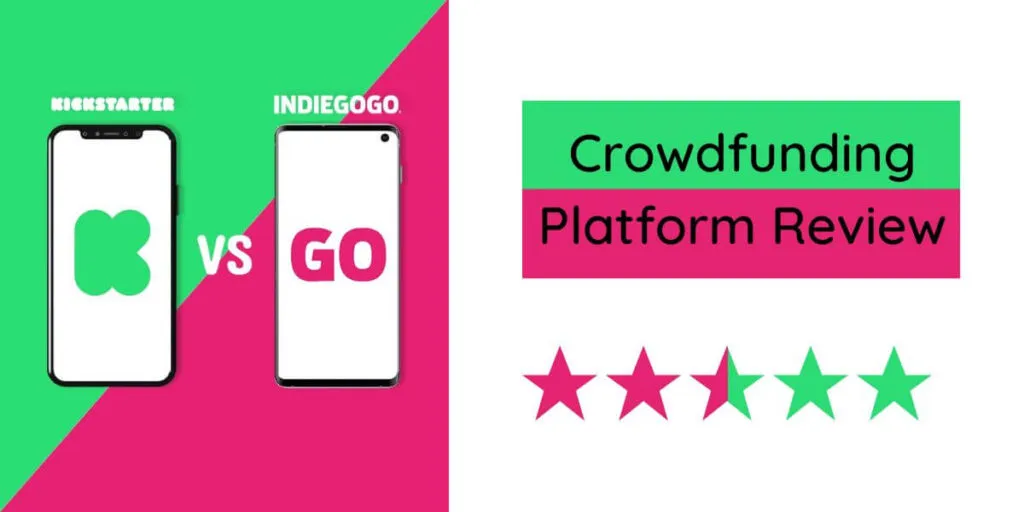Kickstarter vs Indiegogo: Review Crowdfunding Platform 2023 – You can find numerous unique products and projects on the two most popular crowdfunding platforms, Kickstarter and Indiegogo. We tell you what you need to know.
The still relatively young phenomenon of crowdfunding began its triumphant advance in 2003 with the ArtistShare platform. In the years 2008 and 2009, the platforms Indiegogo and Kickstarter, which are relevant today, finally established themselves. Both crowdfunding platforms offer the opportunity to turn innovative products or ideas into reality with the help of crowdfunding.
However, crowdfunding is by no means the same as online shopping – because there are a number of risks when “buying” products on Kickstarter and Indiegogo. Therefore, you should make some considerations before making the transfer. We’ve looked at both crowdfunding platforms and tell you what to look out for.
How Kickstarter works
Kickstarter is generally considered the most successful crowdfunding platform. Here you will find numerous products that no other website – let alone a Brick & Mortar Store – has on offer. When you visit Kickstarter for the first time, you might get the impression that the process would be the same as with Amazon, Ebay and Co. – but that’s not the case.
On the contrary. In the case of Kickstarter, however, it usually doesn’t take too long before the eye has spotted the first interesting product – regardless of whether it ‘s the world’s smallest bicycle smart lock , a Japanese cat bible or a new confectionery in the neighborhood. However, before you invest, you should focus on the following points:
- What amount is spent as a campaign goal?
- What is the current status of target achievement?
- How much time is left until the end of the campaign?
After all, all products on Kickstarter are still in the development phase: You are not buying a finished product here, but are investing in the implementation of a product idea. Although this is a good way to find new, interesting and innovative products, it also harbors some risks from an investor’s point of view.
Kickstarter – Shopping with risks
The most common adversities you can expect when investing in a Kickstarter project are:
- Consistently disappointing end products (e.g. due to unforeseen changes in the production process)
- Products that are not realized despite the achievement of goals (e.g. because the company is already bankrupt or other problems arise)
A prominent example that combines both fails is the ZANO drone . The project was able to generate a total investment volume of three million dollars – however, the makers were not able to produce a working product before the mountain of debt grew immeasurably. Although a few investors received drones, their operational capability was not so good. The majority of investors got nothing:
As The Guardian reports , the percentage of projects that fail on Kickstarter is around nine percent. Conversely, this means that 91 percent of all projects make it onto the market. Not a bad cut – until you put the perspective of the end consumer: How tempting would you be to have a 1 in 10 chance that the product you ordered and paid for would ever get to you? And even when it arrives: In times of Next and Same Day Delivery , you have to be prepared that it can take several days or even months before you can hold your object of desire in your hands.
Kickstarter also does not provide for a refund of investments – at least not from the platform itself. The transactions take place directly between the investor and the provider. Projects that take longer than advertised are not uncommon – but not grounds for a refund. Only if a project does not achieve its financing goal will your account not be debited in the first place – the providers are not allowed to use capital from campaigns that are still running.
How Indiegogo works
Like Kickstarter, Indiegogo is about raising crowdfunding for new, innovative products. Another similarity to the main crowdfunding competition is that you don’t buy finished products via Indiegogo, but instead invest in ambitious projects. In return you get (ideally) the product itself – and depending on how much you invest, special, project-specific benefits. Compared to Kickstarter, Indiegogo covers an even more diverse product and project portfolio. Here you will find, for example, the smallest mobile color printer in the world , massage guns, comics , music projects and even special coffee machines .
In the case of Indiegogo, you should also consider the following aspects for interesting products or projects:
- What amount is spent as a campaign goal?
- What is the current status of target achievement?
- How much time is left until the end of the campaign?
Indiegogo also distinguishes between flexible and rigid financing: With a flexible financing goal, if this goal is not achieved, all investments made up to that point will flow into the project. The model of fixed financing, on the other hand, returns all funds to the investors if the financing target is not reached.
This is an important point, because if the financing goal is flexible and not achieved at the same time, the chances of a market launch or realization of the product or project decrease considerably.
Indiegogo – not without crowdfunding risks
Indiegogo also refuses to take any action itself to arrange refunds. However, there are also exceptions to this crowdfunding platform – insofar as:
- the investment amount has not yet been paid to the campaign owner,
- the duration of the campaign has not yet ended,
- and the product is not yet in the delivery phase.
Read Also: 10 Best PayPal alternatives
So if you change your mind while a campaign is still running, Indiegogo can give you a refund. After that, you would have to enter into individual negotiations with the owner of the campaign about the facts. However, if the production process is already underway, the chances of success in these negotiations are reduced to a minimum.
Kickstarter vs Indiegogo – what now?
Apart from the financing options on Indiegogo, the differences for investors are very limited. On the provider side, the whole thing looks different. For anyone planning their own crowdfunding campaigns, the following list of the main differences between Kickstarter and Indiegogo will certainly be helpful:
Kickstarters:
- Own crowdfunding campaigns can be created in various countries – including Germany;
- All campaigns are checked before activation;
- Fees: 3% to 5% processing fee and 5% of the actual campaign goal achieved;
indiegogo:
- Internationally available;
- No audit of campaigns;
- Flexible financing option;
- Fees: 4% for campaigns with goal achievement, 9% for non-achievement;
Finally, anyone who wants to participate in innovations here should know that the platforms for swarm financing also have to contend with criticism:

Pradeep Sharma is a author the mind behind Techjustify, where I craft insightful blogs on technology, digital tools, gaming, AI, and beyond. With years of experience in digital marketing and a passion for tech innovation, I aim to simplify complex topics for readers worldwide.
My mission is to empower individuals with practical knowledge and up-to-date insights, helping them make informed decisions in the ever-evolving digital landscape.




